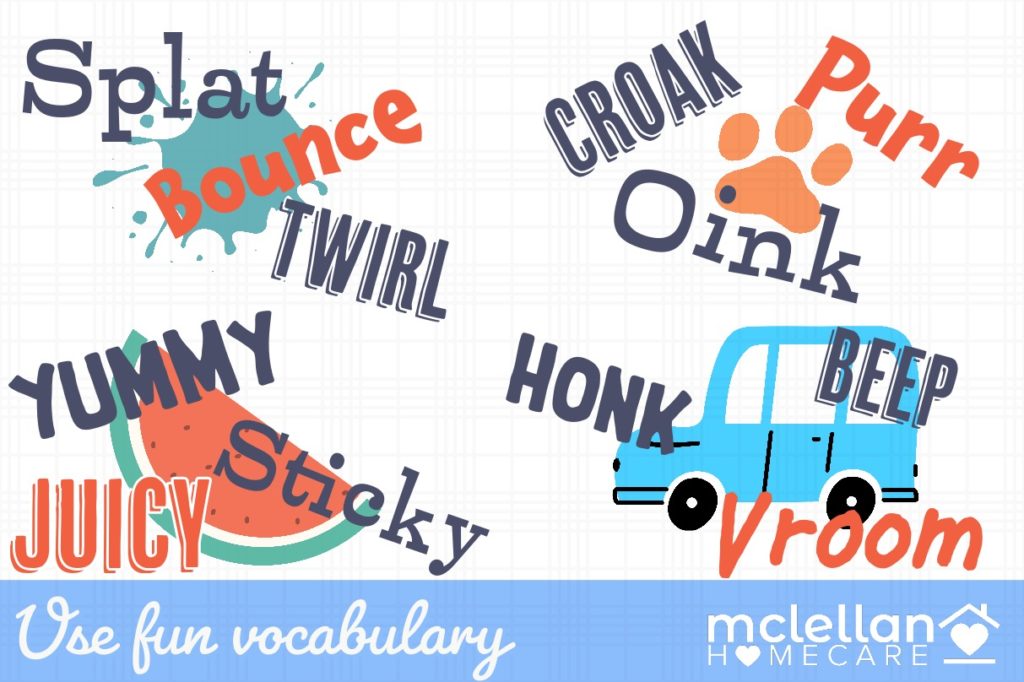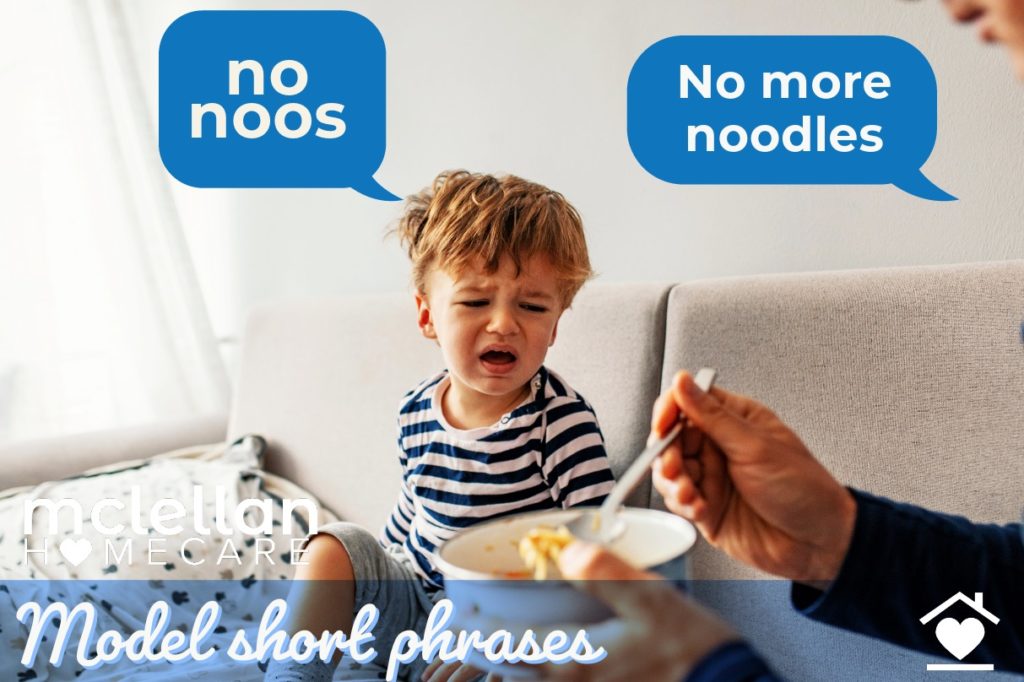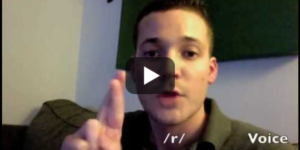There are four aspects to this seemingly simple assignment:
- Modeling
- Short phrases
- Fun vocabulary
- Interesting topics
Let’s take a look at how each aspect encourages your child to talk more.
Why this encourages your child to talk
- Modeling is more impactful than instructing your child because they want to participate in the world of adults; that’s why they imitate you. In contrast, instruction and correction can discourage your child from trying to speak because it can feel like what they said was “wrong.”
- Short phrases work well because your child will hear what they should be aiming for without making it too complex. If your child says “Book now,” you can reply “Let’s read a book now!” Rather than repeating “Book now” or correcting them, you reply with a short but simple phrase. Don’t make it too complicated.
- Fun vocabulary Words that are fun to hear and to say like—Vroom, Crash, and Yuck—as well as descriptive words—like Soft, Loud, Huge, Furry—create an atmosphere of playfulness and make communication appealing to children.
- Interesting topics for your child In our quest to encourage your child to talk, there’s no better starting point than with topics that interest them. You know your child better than anyone. Do they carry a cow around everywhere? Point out every truck on the road? Pull out all the pans they can reach? Those are their interesting topics.
Examples of phrases you might say:
- “Hungry cow” – when they point and make a sound at a cow eating
- “Vroom, loud truck” – when they react to a loud truck driving by
- “Yummy hot dog” – when they make sounds as they reach for a hot dog
- “Silly puppy” – when they react to the dog trying to get something under the coach
What ifs…
What if my child doesn’t imitate what I say?
Don’t give up! Your child needs to hear words used in the appropriate context repeatedly before they start imitating you. That is normal. Over time, the language you model helps your child understand new vocabulary and shows them how they can use the words when they’re ready.
What if I don’t have any ideas for fun vocabulary?
Here are some tried and true kid-pleasers…
- Vehicle noises: Honk, Vroom, Beep, Rev, Rumble
- Animal noises: Woof, Purr, Oink, Cluck, Moo, Baa, Cock-a-doodle doo
- Food descriptions: Yummy, Sticky, Juicy, Stinky, Yucky, Gooey
Or, pick up some fun ideas from children’s book, especially Sandra Boynton, Dr. Seuss, and Alice Schertle:
- Boom, Splat, Buzz, Pop pop, Klopp Klopp from Mr. Brown Can Moo by Dr. Seuss
- Beep, Croak, Bump bump, Vroom from Little Blue Truck by Alice Schertle
- Twirl, Spin, Bounce, Strut, Prance from Barnyard Dance by Sandra Boynton

What to avoid:
Don’t say “Say please.”
If your child says “Book Now” don’t insist they say “Please” before acknowledging they want to read a book. If you’re guilty of this one, don’t be too hard on yourself. Most of us grew up with adults withholding what we requested until we said “please” so we’re trying to help our child by doing the same. But to encourage talking, we want to strengthen rather than interrupt the flow of communication, which is what requiring saying please will do.
Instead of requiring good manners, model them!
Don’t push for good manners yet. For example, instead of saying “Say thank you to your Grandpa” you can say “Oh look what Grandpa brought you! Thank you Grandpa!” If they gesture that they want something, you probably want to instill good manners by training them to say “please” but you are inadvertently telling them what they’ve said isn’t good enough. Before teaching manners, we want them to feel the power of language to get what they want and to express themselves. A good rule of thumb is to work on manners after they have about 25 words they say clearly and consistently.
Don’t push your idea of interesting topics and vocabulary.
If your child says “cuh” at seeing a cow grazing at the side of the road, you might think, “Some people say that cows have 4 stomachs; it’s actually 4 compartments in their stomachs! Isn’t that interesting?” But actually, all you need to say is “Hungry Cow.”
Don’t make your child confirm your guess
It would be polite to say to an adult who has laryngitis or just got a root canal, “Are you trying to say you want an apple?” and wait for them to say yes or no. But that’s not what we want you to do with your child. Instead, you’re making your best guess and stating “You want an apple.”
Don’t correct their pronunciation
Don’t correct their pronunciation by saying something like “It’s called an apple.” Simply model the correct pronunciation by using Apple in a simple phrase.
Don’t point out that they are using the wrong word.
For example, if they point to Grandma and say “Ma,” don’t say “No, that’s Grandma, not Mama.” Instead you can say something like, “Hello Grandma! Nice to see you!”
Don’t say “Can you say?”
Don’t say “That’s an Apple, Can you say Apple?” If they make an “aa” sound and you know they want an apple, the best response is to show that you understand. Your acknowledgement will encourage them to make more sounds which will naturally become pronounced more clearly. Once you understand how language develops for children, you won’t be tempted to say “Can you say apple?” You’ll think “they did just say apple!”
About this series
The posts in this series match the home programs that our therapists give parents. McLellan Homecare therapists always give parents some homework to help them play an active role in their child’s therapy. While the therapist has only an hour or two per week, you—as their primary caregivers—have dozens of small opportunities every day to help your child develop new skills. But we also know that parents are very busy so we just concentrate on one small task each week. Your child’s therapist will help you apply this information to your particular child’s situation and even interests. Each week the therapist will ask about how it went and help you with suggestions if you are having trouble implementing the program.







